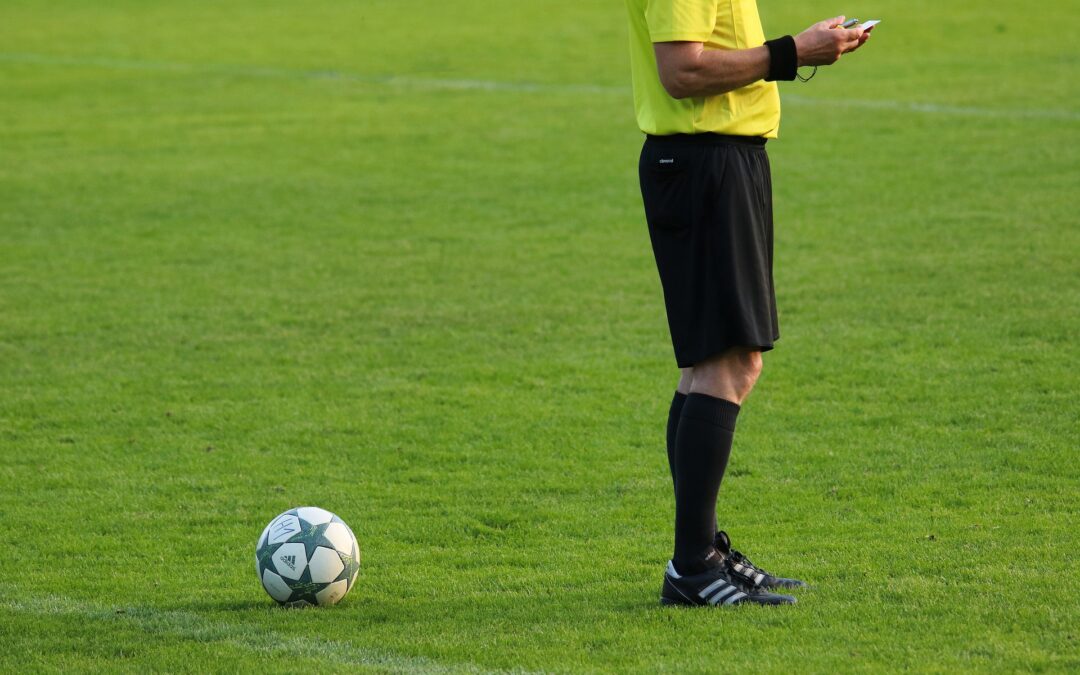High injury rates and weak injury prevention strategies in football referees at all levels of play.
Szymski D, Opitz S, Pfeifer C, Rupp M, Angele P, Alt V, Krutsch W, Krutsch V. Scand J Med Sci Sport.2021;00:1-11.
https://onlinelibrary.wiley.com/doi/10.1111/sms.14083?af=R
Take-Home Message
Amateur-level referees have higher injury rates than referees at the professional or semi-professional level. However, amateur-level referees are less likely to warm up for more than 10 minutes or use exercises related to injury prevention.
Background
While injury rates among athletes are widely studied, we know less about the injury rates of referees who officiate these competitions. If we understood more about injury rates, risk factors for injuries, and prevention strategies among referees, clinicians could develop and implement injury prevention strategies for referees.
Study Goal
Szymski and colleagues completed a retrospective cohort study to investigate injury trends of referees at different levels of competition. The researchers also investigated warm-up and cool-down programs used by referees.
Methods
The researchers surveyed 796 male and 127 female German soccer referees at the end of a season (91 professional, 151 semi-professional, and 681 amateur levels). Referees were at least 18 years old and had officiated at least 1 game. The survey inquired about socio-demographic and sport-specific data, injury patterns, history of injuries, soccer exposure, training routines, as well as warm-up and cool-down routines.
Results
Overall, about 1 in 5 referees reported an injury. Injury rates differed between referees at different competition levels, with amateur referees sustaining higher injury rates than semi-professional and professional referees. A majority of injuries affected the lower extremity. Referees in the amateur and semi-professional leagues also reported a shorter warm-up duration than professional referees. Most referees reported using a self-designed training program instead of established training programs. Over half of semi-professional and amateur level referees said they performed a warm-up to help prevent an injury.
Viewpoints
Overall, the data from this study suggests that amateur referees do not warm up as much as referees in higher levels of competition and have higher injury rates. Furthermore, amateur referees are less likely to follow a pre-prescribed injury prevention warm-up program. However, it is reassuring that over half of amateur referees indicated they warm up to reduce their risk of injury. Amateur-level referees may be an ideal population to encourage the implementation of evidence-based injury prevention warm-ups because many are motivated to warm up to reduce their risk of injury. It would be interesting to see if these findings apply to referees in other countries and sports. Furthermore, we need to understand better why referees are warming up for less than 10 minutes and why they pick specific warm-up exercises. This type of research is urgently needed considering 1 in 5 referees reported an injury during a single year.
Clinical Implications
Clinicians should consider engaging with amateur-level referees about how they could adapt their warm-up programs to reduce their risk of injury.
Questions for Discussion
How do you feel about your interactions with the referees at your competitions or training? Have you considered them as a potential patient population? How have your thoughts changed since considering this study?
Written by: Kyle Harris
Reviewed by: Jeffrey Driban
Related Posts
High Adherence to the FIFA 11+ Decreases Injury Risk Among Youth Female Soccer Players
FIFA 11+ Reduces the Risk of Injuries Amongst Soccer Players
Another Feather in the Cap of the FIFA 11+ Injury Prevention Program
FIFA 11 … (But Really FIFA 11 +) Programs Are Effective in Reducing Football (Soccer) Injuries
FIFA11+ Improves Performance and Reduces Injuries in Soccer


